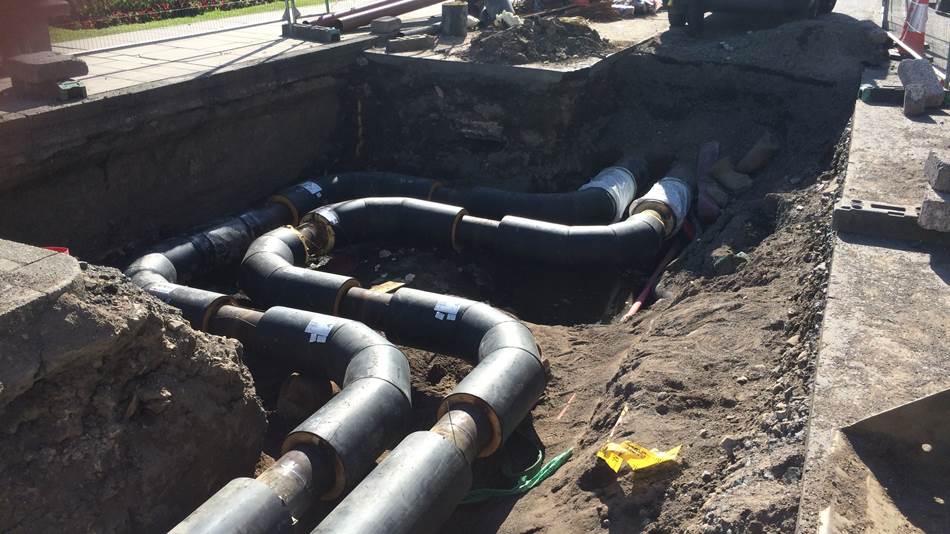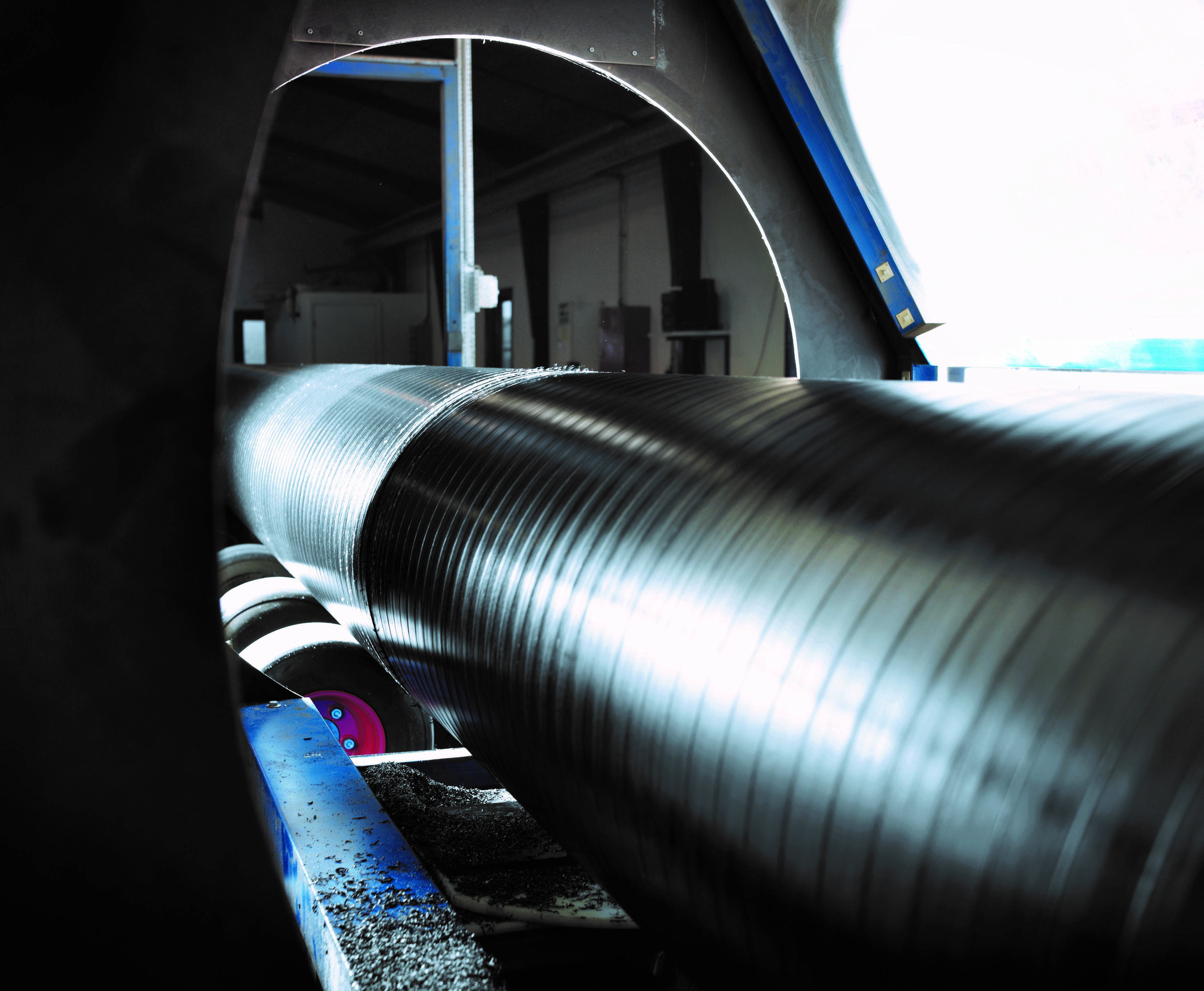Client: University of Glasgow
Contractscope: £2.5m
Timescale: 10 months
LOGSTOR contact· Christopher Hill, chr@logstor.com, +44(0)7788 284884
Main Contractor: Crown House Technologies Ltd
- Multi-Million pound district heating scheme
- One of largest energy network projects in Scotland
- Replacing 50 year old heating system
- 20% reduction in carbon emissions

Introduction
LOGSTOR, the world leader in pre-insulated pipe systems for district heating and cooling is the approved supplier for the new £16m district heating project at The University of Glasgow.
The Project involves the building of an extensive District Heating System on the University’s Campus. The system’s heat generation will be done mainly through a Combined Heating and Power (CHP) gas fired thermal and electrical power generator facility. A boiler plant consisting of five gas fired boilers will support the CHP to meet the University’s present and planned future heating demand.
The CHP and boilers facility is linked to the campus through a district heating circuit consisting of an underground network feeding around thirty-six buildings.The newly installed facility will in the short term add value through the reduction of operation costs and carbon footprint whilst providing a long term energy supply solution that is sustainable, flexible and commercially viable. Also the new installation will serve as a practical learning source and demonstration aid for engineering university students.
Installation
LOGSTOR has installed six kilometres of primary mains infrastructure pipework across the University’s Gilmorehill campus (on both sides of University Avenue) over the duration of 10 months, using the Series 1 Conti (diffusion barrier) pipe system – to meet heat loss requirements across the project.
Using the latest combined heat and power (chp) technologies the project will help the University reach its environmental target of a 20% reduction in carbon emissions. The current heating system is more than fifty years old and the risk of regular system failures is high with the potential to disrupt teaching and research.
Christopher Hill, UK Sales Manager for LOGSTOR: “This is one of the largest energy network projects in Scotland, replacing an end of life steam plant and infrastructure which will massively reduce operation costs, increase the number of buildings served and reduce carbon, going half way to the University’s overall target.
Throughout the project we have worked closely with the principal contractor, Crown House Technologies,to resolve any operational problems.”
The new heating and power network, will connect 53 buildings on the Glasgow University estate, to the new energy centre, which contains five boilers with a combined thermal capacity of 42 MW and a gas-fired CHP engine, producing 3.35 MW electricity and 3.25 MW of heat. The district heating network and energy centre have been commissioned.
A new building is being added to the District Heating network and the works are expected to be complete in September 2016. In addition, and in close collaboration with the University, the project has provided an apprenticeship opportunity for local engineering students.
Conti-Pipe Technology
During the manufacturing process for the Logstor Conti pipes, the pipes are made by casting the insulation onto the service pipe in a moving mould, after which the casing is extruded onto the insulation. The production takes place in a continuous process.
An effective diffusion barrier foil, preventing diffusion of insulating gases, is embedded between the insulation and the casing. Consequently, continuously produced pipes with diffusion barrier foil do not age. The method is suited for pipes with outer casing dimensions 90 - 315mm.
The innovative production procedure of the Coni Pipe guarantees a constant foam density and thickness of the jacket pipe over the total pipe length. This results in opportunities to keep the energy efficiency of a district heating network high, and the heat-loss and CO2 emission low. The positive effects for the environment as well as for the expenses for network losses during the total lifetime are considerable.
The total heat loss is over a 30 year period is 10-25% lower than that of corresponding, traditional pipe. The smallest dimensions yield the greatest savings.
The pipes are supplied with two copper wires embedded in the polyurethane (PUR) insulation; these wires are used to identify any leaks in the system. The polyurethane (PUR) insulation has a guaranteed lambda value of 0.023 W/mK.
The advantages of Conti Steel pipe systems are:
- Reduction in the number of joints needed through the availability of long lengths
- Reduction in the number of bends/fittings needed as the piping can be factory curved to follow the best and easiest path
- Reduced operating costs due to diffusion barrier being fitted
- Fully welded system
- Alarm System
- Fully compliant with CIBSE CHPA Heat Networks Code of Practice

Image shows: the LOGSTOR Conti pipe. Investments in Conti pipes have less than 10 years payback period, which fully endorses the production and installation method.